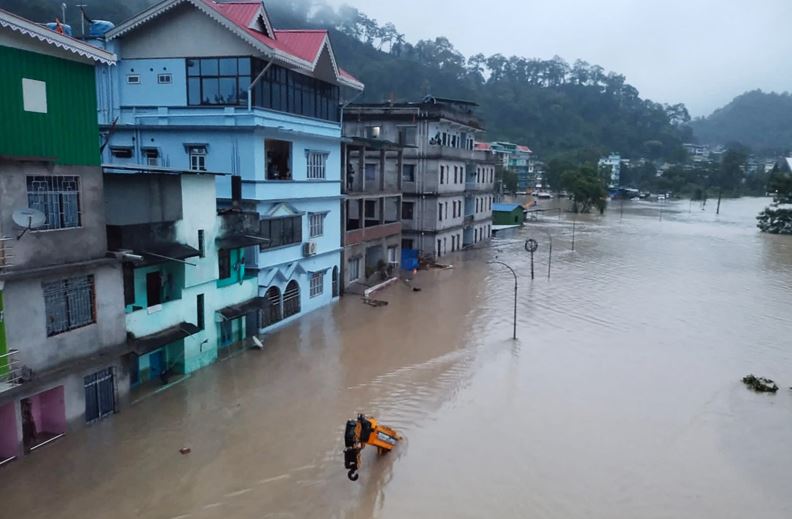
Monsoon rains cause widespread destruction every year, but experts say climate change is shifting weather patterns and increasing the number of extreme events.
Disaster authorities in India’s northeastern state of Assam said eight people had died over the past day, taking the death toll due to the downpours since mid-May to 46.
Some 2,800 villages in the state have been submerged, affecting over 1.6 million people, they said.
Assam’s Chief Minister Himanta Biswa Sarma said the current situation in the state was due to rain in India’s upstream state of Arunachal Pradesh.
“No human intervention can stop it,” he said.
In low-lying Bangladesh, downstream from India, the disaster management agency said floods had impacted around 1.8 million people.
It warned waters would rise over the next three days.
A 21-year-old man died after being swept away by surging waters while fishing.
Much of the country is made up of deltas as the Himalayan rivers of the Ganges and Brahmaputra, which slowly wind towards the sea after coursing through India.
The summer monsoon brings South Asia 70-80 percent of its annual rainfall, as well as death and destruction due to flooding and landslides.
The rainfall is hard to forecast and varies considerably, but scientists say climate change is making the monsoon stronger and more erratic.
AFP
All rights reserved. This material, and other digital content on this website, may not be reproduced, published, broadcast, rewritten or redistributed in whole or in part without prior express written permission from PUNCH.
Contact: [email protected]





